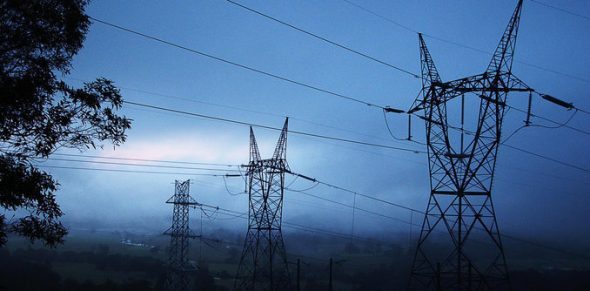In Brief
This note looks at the Blakers and CSIRO/ENA high renewables penetration studies. One takes a centralised approach, the other – unsurprisingly, when you look at the sponsors – takes a distributed approach. We conclude that:
- On the numbers, pumped hydro is cheap, but it takes forever to deploy. Overseas estimates say 5-15 years. Its cheap enough that clearly more work is fully justified. The Blakers study also explicitly formalises the concept of the levelised cost of balancing [LCOB] and this makes it a useful contribution to the literature all on its own. The LCOB is modelled to be under $25/MWh for 100 per cent renewables.
- The CSIRO/ENA study is difficult to work through as it covers so many topics. However we think its estimate of the amount of rooptop PV is optimistic. The best part of this study was that it did focus on distributed energy, rather than the centralised-centric approach of most other formal modelling (such as the Blakers study). It did include the valuable suggestion of a stand-alone power system tariffs for households and businesses.
- Neither study provides a clear pathway from today’s system to the future.
- In our view, the definitive piece of modelling is yet to be done. Such a model would combine the Blakers and CSIRO/ENA points of view to come up with an integrated model that provides a pathway to a high renewables penetration future and identifies the institutional regulatory steps needed to achieve it.
Another day, another model, another answer, and who cares anyway
Over the past year there have been a series of academic reports modelling out high (>50%) renewable penetration in the NEM . The key questions such research attempts to answer are:
- Will the lights stay on, and the aluminium smelter/data centre keep working?
- What will the price of electricity be?
- What is the generation technology mix.
Broadly speaking, our reading of these reports suggests that the studies are broadly in agreement on questions 1 & 2. There will be enough dispatchable power and the price in the wholesale market (before adding in distribution costs) will be below A$100/MWh.
However there is little agreement on question 3. Every study comes up with its own answer. Unfortunately, a side effect is to cast doubt on the answer to questions 1 and 2. If studies don’t agree on how it will be done, how can they be sure it will work at all?
Next we would say that, in our view, none of the studies are completely convincing, and yet each offers promise and potential.
Of all the recent studies the one that is of most interest to me is the CSIRO/ENA study. Not because it’s the best of the studies. Far from it, it’s convoluted, confused and comes to some (on the face of it) implausible conclusions. However its value lies in the fact that, from the beginning, it takes a distributed energy approach. Most other studies don’t model distributed energy in detail but concern themselves with utility-scale generation and transmission.
CEEM studies
Last year the focus was on UNSW CEEM which published a summary of the academic research into the topic at that time.
100% renewables in Australia – research summary
Essentially this research ended up doing its balancing (see below) via “bio energy.”
Already in 2017 we have had two further significant contributions:
Blakers study
Firstly there was the ANU study lead by Andrew Blakers
Blakers study focus on pumped hydro
This paper had two innovations. Firstly it made explicit use of the “levelised cost of balancing [LCOB}’. This is the additional cost, beyond the actual generation cost, in a high renewable penetration system required to make the electricity supplied on demand rather than when available. Secondly, and following on from point 1 Blakers provided the first large-scale estimate of the cost of doing the balancing in Australia via pumped hydro.
CSIRO/ENA
Next,we had last week’s CSIRO/ENA study, which concluded that rooftop PV could provide as much as 20 per cent of electricity energy by 2050 based on over 70GW of distributed PV compared to 5.5GW today.

In our view, that’s a big ask and would require PV on a lot of business rooftops as well as residential. If we assume that townhouses, flats and highrise apartments don’t have PV, there are about 7 million detached houses in Australia. Lets assume 75 per cent of them end up with an average 5kW of PV, that’s just 30GW in total, leaving around 40GW to be picked up from the commercial market. How realistic is that? By contrast, the Blakers report estimated 17GW of rooftop PV
Pumped Hydro
We added up the capex implied to take the NEM to 100 per cent renewable using the generation mix modelled in the Blakers report and got to $190 billion. Of that, about 25 per cent, or $49 billion is pumped hydro storage.


We calculate that an electricity price of say $100/MWh is required to justify $190 billion of capex, assuming constant electricity volumes of 200TWh and all-up operating costs of $25/MWh. These numbers are right around those reported by Blakers.

This model is just a back of the envelope check.
Using the same format, but just looking at the $56 billion cost of the pumped hydro and transmission alone, produces something like $20/MWh as the LCOB – maybe even less.
The pumped hydro storage assumes 31 hours of storage for every MW of capacity; much higher than most existing projects.
The Blakers report used pumped hydro capex of around $A205/kWh ($0.8 m per MW in equipment + pipe costs + $70 KWh of storage (dams)).
These numbers are broadly comparable with the preliminary capex estimate for the Kidston pumped hydro project. Kidston preliminary capex estimate is $300 million and using the Blakers parameters gets us to around $305 million.

As an analyst who has seen many capex proposals, I’ll not be in the least bit surprised if the final cost is higher than that. Kidston had cheap land costs but only has $200 million of “head”. Blakers modelling is based on a “head” of $600 million.
Recent global pumped hydro capex costs are broadly in line with the numbers quoted above, at least based on the capex $/KWh of energy/electricity.

Total pumped hydro capex estimate
The Blakers report broadly envisages 490GWh of storage required for balancing the wind investment. Unusually, this breaks down between 16GW of power capacity and 31 hours or so of storage. 31 hours storage compares to Kidston at say 6 hours. On our calculations this means about $49 billion of investment in pumped hydro storage.

Blakers view of transmission cost
The Blakers report models a HVDC transmission backbone from Queensland to South Australian that more or less parallels the existing AC transmission backbone. To quote:
“We envisage sequential construction in the 2020-2030 timeframe of several independent overhead HVDC interconnectors, each 700-1500 km long, through flat country with good access (inland Australia). The interconnectors operate at a voltage of ± 800 kV and have nominal power capacity of about 6-7 GW. On the basis of similar systems constructed around the world we estimate a cost of $400/MW-km” Source: Blakers Report
The transmission backbone “notional” map shown in the Blakers report runs from North Queensland to Adelaide. Using 2500km of Brisbane to Adelaide and the Blakers estimates we end up with $8 billion of transmission costs.

Combined pumped hydro and transmission less than distributed battery cost
If we add the pumped hydro and transmission capex together its $56 billion for 496GWh of storage.

However we don’t think that’s the end of the story. Lithium storage is very fast to deploy, can provide functions such as frequency control that are more difficult for pumped hydro, and the pumped hydro approach needs to be proved up.
That is to say there is no doubt pumped hydro works, but there is doubt about whether 16 GW can be built as easily as that. Speed to market is a massive advantage for batteries. In our view the modular nature of batteries and the fact that they can be deployed next to the load are also significant advantages. Its not just transmission costs but also distribution costs that can be minimised with batteries. Pumped hydro can take 5-15 years to deploy.
That said. the numbers for pumped hydro are interesting and clearly worth further investigation.
A tariff to encourage distributed energy
There seems little doubt that before considering cost, an intelligent grid with resilient distributed generation and storage is going to be superior on any metric, to a centralised one-way grid dependent on the function of a few central generation units and limited high voltage transmission markets.
Such a grid will be fault resilient, and many suppliers and many consumers typically make for fairer prices and customers are likely to feel more in control.
That’s why the Energeia/ENA proposal to design a “stand alone power system tariff [SAPST]” Energeia – Roles and incentives for microgrids as previously reported by reneweconomy is of such interest. In this scenario, networks would offer a discounted tariff for the right to disconnect a customer for a few hours each year.
Once again, though, this points to the ringfencing between networks and generators as a fundamental problem to reform. Any such tariff would be far better if it incorporated a generation as well as a network element. The other problem is that, at the moment, networks have plenty of spare capacity. They just don’t have the incentive to offer such a tariff.
David Leitch is principal of ITK. He was formerly a Utility Analyst for leading investment banks over the past 30 years. The views expressed are his own. Please note our new section, Energy Markets, which will include analysis from Leitch on the energy markets and broader energy issues. And also note our live generation widget, and the APVI solar contribution.







